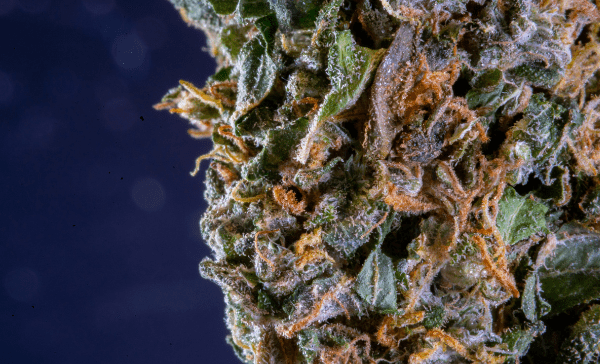The growing popularity of legal cannabis
As cannabis legalization continues to spread worldwide, the demand for cannabis products has never been higher. The growing acceptance of cannabis for recreational and medical use has led to a vast array of strains and products available to consumers. Here is an article to give you a deeper understanding of the various cannabis compounds that you should know about.
The importance of understanding cannabis compounds
To make the most of your cannabis experience, it’s essential to understand the various compounds found in the plant and how they interact to produce different effects.
Overview of THC, CBD, and terpenes
This article will focus on the three primary compounds found in cannabis: THC, CBD, and terpenes. We will explore their properties, effects, and benefits to help you make informed choices at our dispensary.
THC: Tetrahydrocannabinol
Definition and basic properties
Tetrahydrocannabinol (THC) is the primary psychoactive compound found in cannabis plants. It is responsible for the “high” sensation that users experience when consuming cannabis.
How THC interacts with the endocannabinoid system
THC interacts with the body’s endocannabinoid system (ECS) by binding to cannabinoid receptors, primarily CB1 receptors located in the brain.
The psychoactive effects of THC
Euphoria and relaxation
THC is known for producing feelings of euphoria, relaxation, and increased sensory perception.
Altered perception and cognitive function
High doses of THC can lead to altered perception, impaired memory, and reduced cognitive function.
Medical benefits of THC
Pain relief
THC has been shown to be effective in managing chronic pain, including neuropathic pain and muscle spasms.
Appetite stimulation
THC can stimulate appetite in patients experiencing loss of appetite due to chemotherapy or other medical conditions.
Anti-nausea properties
THC has demonstrated antiemetic effects, making it an effective treatment for nausea and vomiting.

CBD: Cannabidiol
Definition and basic properties
Cannabidiol (CBD) is a non-psychoactive compound found in cannabis plants, known for its potential therapeutic benefits.
How CBD interacts with the endocannabinoid system
CBD interacts with the ECS differently than THC, primarily by targeting CB2 receptors and inhibiting the breakdown of endocannabinoids.
Non-psychoactive effects of CBD
Unlike THC, CBD does not produce a “high” sensation, making it an attractive option for those seeking potential therapeutic benefits without the psychoactive effects.
Medical benefits of CBD
Anti-inflammatory properties
CBD has been shown to have anti-inflammatory properties, making it useful for managing conditions such as arthritis and inflammatory bowel disease.
Anxiety and depression management
CBD may help reduce anxiety and depression symptoms by influencing serotonin levels in the brain.
Seizure reduction
CBD has shown promise in reducing seizure frequency in patients with epilepsy, particularly drug-resistant forms.
Neuroprotective effects
CBD may have neuroprotective properties, potentially helping to slow the progression of neurodegenerative diseases such as Alzheimer’s and Parkinson’s.

Terpenes
Definition and basic properties
Terpenes are organic compounds found in plants, including cannabis, that give them their unique aroma and flavour.
The role of terpenes in cannabis
In addition to contributing to the scent and taste of cannabis, terpenes play a crucial role in modulating the plant’s effects.
Common terpenes found in cannabis strains
Myrcene
Myrcene is the most common terpene in cannabis and is known for its earthy, musky aroma. It has potential sedative and muscle-relaxing effects.
Limonene
Limonene has a citrusy aroma and may have mood-enhancing and stress-relieving properties.
Linalool
Linalool has a floral scent and is thought to contribute to calming and anti-anxiety effects in some cannabis strains.
Pinene
Pinene, with its pine-like aroma, may have anti-inflammatory and bronchodilator properties, potentially improving respiratory function.
Caryophyllene
Caryophyllene is characterised by its spicy, peppery aroma and may have potential anti-inflammatory and analgesic effects.
How terpenes influence cannabis effects
The entourage effect
The entourage effect is the theory that cannabis compounds, including terpenes, work together synergistically to enhance the overall effects and therapeutic benefits of the plant.
Terpene profiles and strain-specific effects
Different cannabis strains have unique terpene profiles, which can influence the effects users experience. Understanding these profiles can help you choose strains tailored to your preferences or medical needs.
Choosing the Right Cannabis Strain
Understanding strain profiles
Indica, Sativa, and Hybrid strains
Indica strains tend to be more relaxing and sedative, while Sativa strains are typically more uplifting and energizing. Hybrid strains fall somewhere in between, combining properties from both Indica and Sativa.
THC, CBD, and terpene concentrations
Cannabis strains vary in their THC, CBD, and terpene concentrations, which can significantly impact their effects.
Factors to consider when selecting a strain
Desired effects
Consider the effects you’re looking for, such as relaxation, focus, or pain relief, when choosing a strain.
Tolerance levels
New users or those with low tolerance should opt for strains with lower THC concentrations to avoid potential adverse effects.
Medical conditions
Select strains that align with your specific medical needs, based on their cannabinoid and terpene profiles.
Consulting with a knowledgeable budtender
A knowledgeable budtender at our dispensary can guide you in choosing the right strain based on your preferences and needs.
Responsible Cannabis Consumption
The importance of starting low and going slow
Begin with low doses and gradually increase your intake to find the optimal dose for your desired effects and tolerance.
Different methods of consumption
Smoking
The most common method of cannabis consumption, providing rapid onset of effects.
Vaping
Vaporizing cannabis offers a less harsh alternative to smoking, with similar onset times.
Edibles
Edibles provide a discreet, long-lasting method of consumption, but have a delayed onset of effects.
Tinctures
Tinctures are liquid extracts that can be taken sublingually or added to food and beverages, offering a versatile method of consumption.
Potential side effects and risks
While cannabis is generally considered safe, it can cause side effects such as dizziness, dry mouth, and anxiety in some users.
Safe storage and keeping cannabis away from minors
Ensure your cannabis products are stored securely and out of reach of minors to prevent accidental ingestion.
The growing role of cannabis in recreational and medical use
Thanks to shifting perceptions and increasing legalization, cannabis has gained popularity in recreational and medical settings. From traditional flower to concentrates to edibles and topicals, the recreational market offers a wide variety of products. Cannabis research has also revealed potential therapeutic benefits for conditions such as chronic pain, epilepsy, and multiple sclerosis. Medical cannabis products, such as CBD oil and transdermal patches, offer targeted and controlled dosing for patients as a result.
As cannabis use becomes more prevalent, the need for accurate information and research grows. Educational initiatives help dispel myths and misconceptions, while increased funding for research deepens our understanding of the plant’s chemistry. The cannabis industry has also generated economic opportunities through job creation and tax revenue, contributing to public programs and reducing stigma surrounding its use. As the industry evolves, consumers can expect access to a diverse range of products and treatments tailored to their individual needs and preferences.
The importance of understanding cannabis compounds for informed consumption
Understanding the science behind cannabis compounds like THC, CBD, and terpenes is essential for informed consumption, allowing users to make educated decisions for a safe and enjoyable experience. Knowledge of these compounds helps users customize their cannabis experience based on their preferences and needs, manage potential side effects and risks, and optimize therapeutic benefits for medical cannabis users.
As the cannabis market expands, a solid understanding of cannabis compounds equips users to navigate the variety of products and consumption methods. Informed consumption also empowers users to become advocates for responsible use and promote accurate information within their social circles. Staying up-to-date on the latest research and developments ensures users can maximize the potential benefits of this versatile plant and create a more informed and responsible cannabis community.
Continued research and education on cannabis science
As the understanding of cannabis science expands, it’s essential to stay informed and up-to-date on the latest research to maximize the plant’s potential benefits and uses. Continued research and education in this field will not only uncover new applications but also help consumers make more informed decisions regarding their cannabis experiences.
By actively engaging in learning about cannabis science, users can navigate the ever-evolving landscape of products and consumption methods with confidence. This knowledge will ultimately contribute to a more responsible and educated cannabis community, driving innovation and ensuring the safe and enjoyable use of this versatile plant.